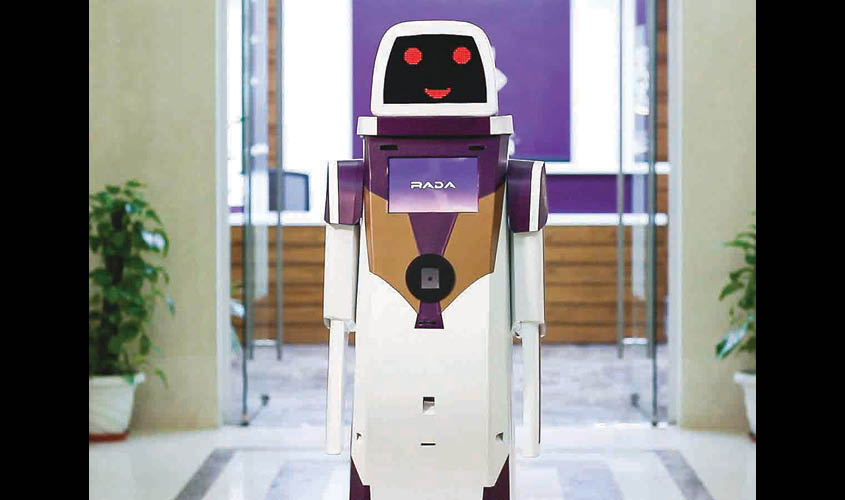An airport lounge is more than a transition gateway for passengers—it is an exhibition space as well, which can be used to showcase cultural and even technological marvels of the age. For examples that fall in the latter category, consider the number of hi-tech robots installed at major international airports around the world.
There’s the robot designed by LG, at the Incheon International Airport in Seoul, South Korea; or the dancing robot, Gladys, at Glasgow Airport in Scotland. These devices are programmed to assist passengers with flight information, security checks and weather updates. Some of them are even handy for entertainment purposes, capable of playing songs and videos
on demand.
Last week, the Indira Gandhi International Airport in Delhi became the first one in India to get its own “airport robot”. The AI-powered robot named RADA, which was unveiled last week, has been installed by Vistara Airlines at its Signature Lounge in Terminal 3.
RADA can assist passengers with various tasks—like addressing their flight-related queries—as well as offers games, video and music playback options through its user interface. The robot is the brainchild of Vistara’s chief information and innovation officer, Ravinder Pal Singh. In an official statement, Singh spoke about what inspired him to create this machine: “It was a realisation that the talented, young employees engaged in ground services, gain immense customer service experience on the job, but the limited scope of their routine work could challenge their true potential. Some of them spend decades within the walls of an airport, assisting customers. Therefore, we thought of inventing a robot that can help us enhance customer experience by gradually taking over the routine, mundane tasks.”
According to the official release from Vistara, “RADA will be further developed over a period of time in terms of functionality and features for future use cases, after gauging customer feedback.”
At present, RADA is capable of scanning boarding passes, giving details of the terminal, departure gates, weather conditions at the destination, flight status and information about Vistara’s products and services. This robot is designed to interact with passengers in different ways—it can greet people and speak to them with hand movements. Besides, it is a highly mobile machine, equipped with four wheels that help in 360-degree movement. The robot can move around the lounge but only on a pre-programmed path.
“With RADA, we aim to change the way people interact and fly with an airline. We will be developing RADA based on customer feedback and equipping it with the most effective features in time to come. Our steadfast focus remains to be on delighting customers across all touch points, and we’re confident that RADA will help us take the ‘new feeling’ to the next level.” said Vistara’s Chief Executive Officer, Leslie Thng, in an official statement.
Rumour has it that the Chennai airport is also going to place such robots on its premises soon.
Airports are not the only places making use of AI-powered robots for customer assistance. Cities like Dubai and New York have security robots installed at shopping malls and even police stations. On a more domestic level, robots are helping house owners in Western cities with their day-to-day errands.
But how far can we take our faith in machines? Can we allow robots to fly airplanes, for instance? Can we trust them with our lives? The truth is, wherever there’s a machine, there exists a margin for error. Last year, a security robot in Washington DC ended up inside a water fountain after suffering a serious technical glitch. Such examples are to be found all over the world, casting a shadow of doubt over our AI-powered future.

